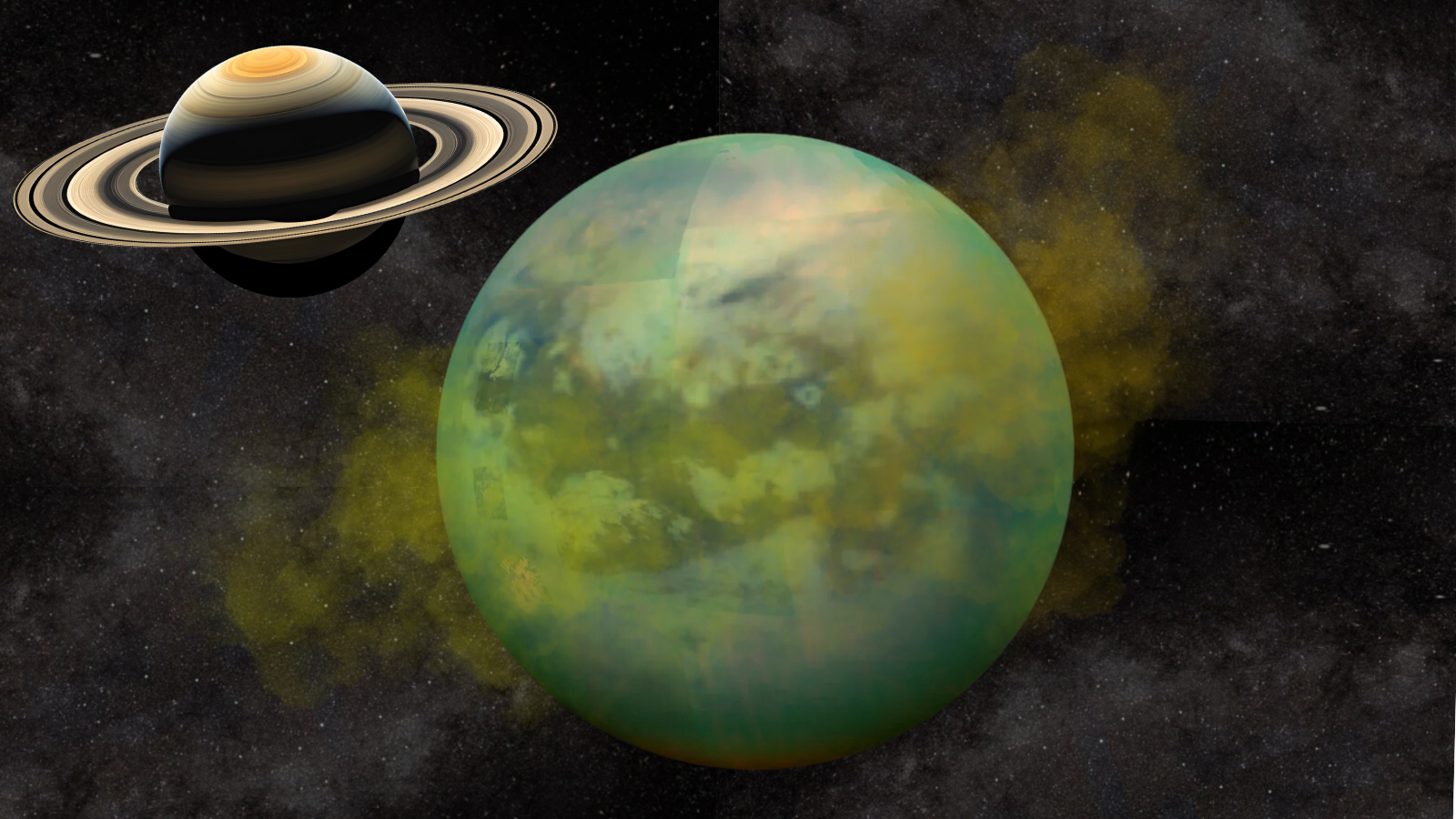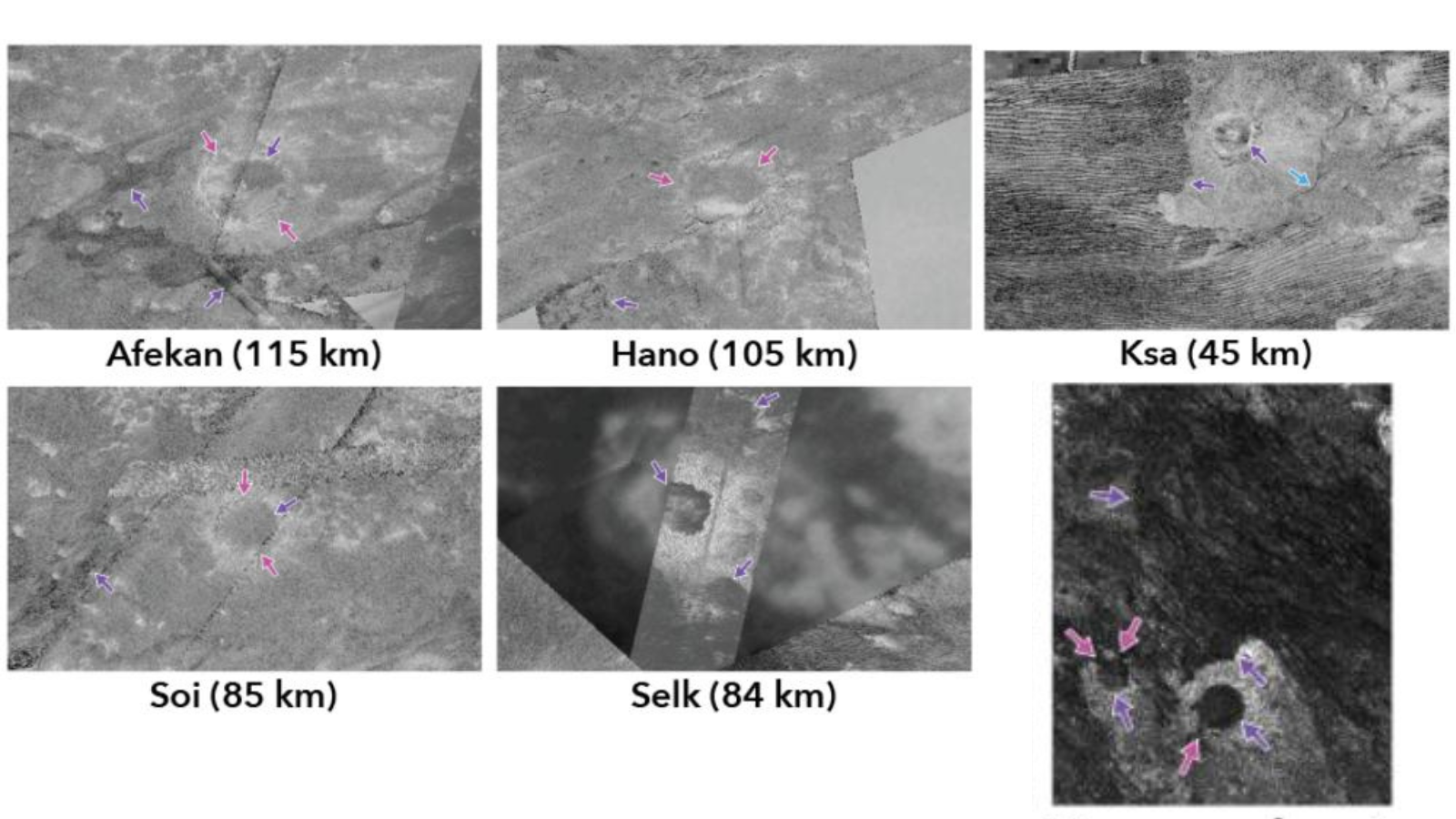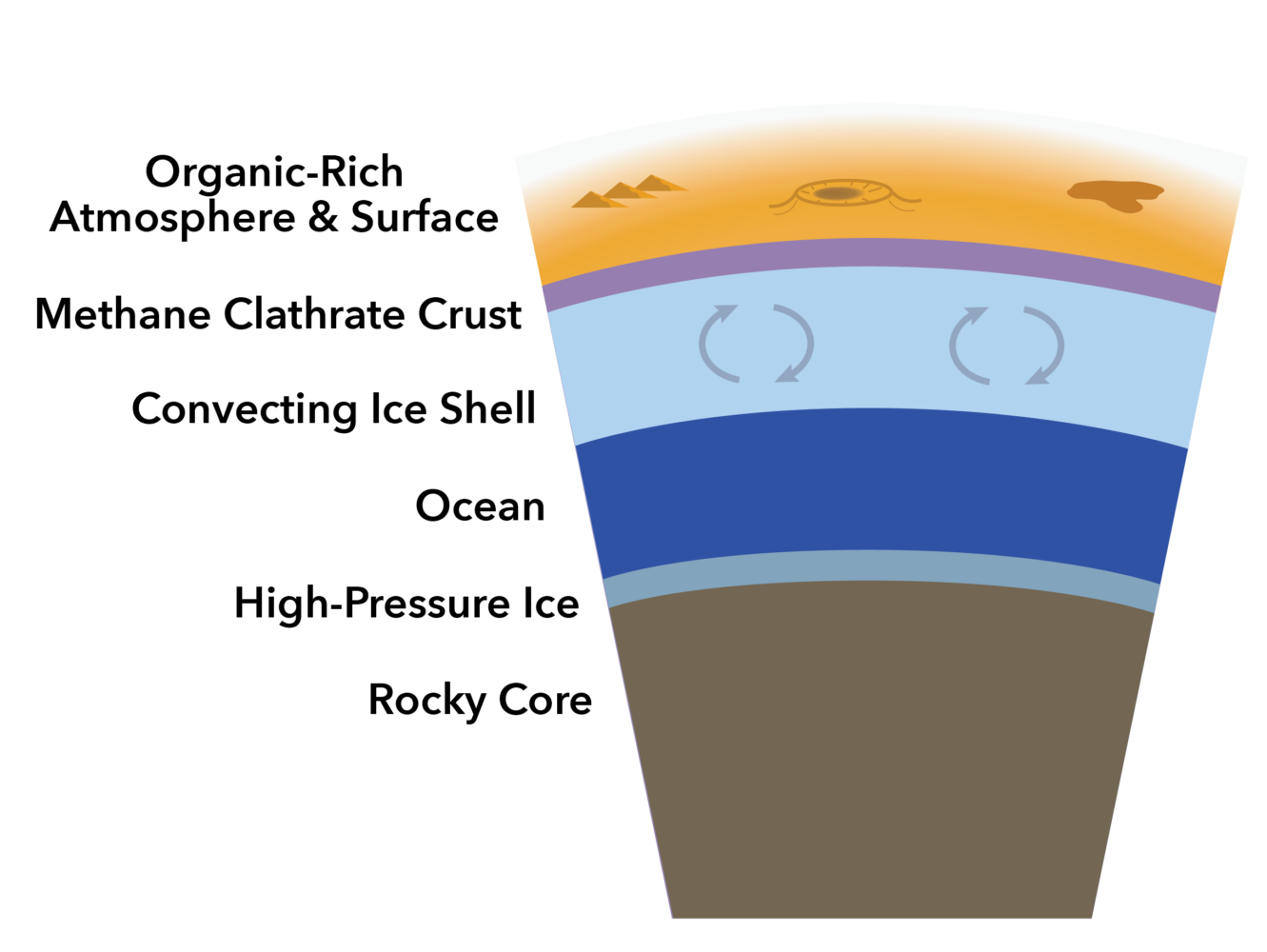
Scientists have discovered that the icy shell of Saturn's largest moon, Titan, could possess an insulated, six-mile-thick (9.7-kilometer-thick) layer of methane ice beneath its surface. Ironically, this layer may make signs of life from the subsurface ocean of Titan easier to detect. And, down the line, the discovery could benefit the fight against human-driven climate change on Earth.
Titan may be a moon, but it is also more similar to Earth than any other solar system planet. That's because it is the only planet or moon in the solar system other than Earth to possess an atmosphere as well as liquid rivers, lakes and seas. Because of the frigid temperatures of Titan, however, this liquid is composed of hydrocarbons like methane and ethane. Still, the surface ice of Titan is indeed composed of water.
The new results from a team of planetary scientists at the University of Hawaii at Mānoa revealed that methane gas may also be trapped within Titan's ice shell, forming a distinct crust up to six miles thick. This gas could warm the underlying ice shell and help molecules rise to the surface of Titan, some of which could indicate the presence of life. This warming may also help explain Titan’s methane-rich atmosphere.
"If life exists in Titan's ocean under the thick ice shell, any signs of life, biomarkers, would need to be transported up Titan's ice shell to where we could more easily access or view them with future missions," research team leader and University of Hawaii scientist Lauren Schurmeier said in a statement. "This is more likely to occur if Titan’s ice shell is warm and connecting."
The team was first tipped off to the potential existence of this connecting layer of methane ice by the presence of shallow impact craters on Titan. Only 90 impact craters have been seen on the surface of the Saturnian moon, and these have been confusing to observe because they should be hundreds of feet deeper than they actually are.
"This was very surprising because, based on other moons, we expect to see many more impact craters on the surface and craters that are much deeper than what we observe on Titan," Schurmeier said. "We realized something unique to Titan must be making them become shallower and disappear relatively quickly."
Investigating Titan's shallow craters
To further delve into the mystery of Titans' swallow impact craters, Schurmeier and colleagues turned to computer modeling. This allowed them to test how much the surface of Saturn's largest moon would relax and rebound after an asteroid impact if its icy shell were coated with an insulating layer of methane clathrate.
Methane clathrate, or "methane hydrate," is a solid compound in which a large amount of methane is trapped within the crystalline structure of water, creating a solid similar to ice.
Considering craters of similar size on an icy moon of Jupiter that's comparable to Titan, Ganymede, the researchers could compare possible depths of impact craters on the Saturnian moon.
"Using this modeling approach, we were able to constrain the methane clathrate crust thickness to five to 10 kilometers [about three to six miles] because simulations using that thickness produced crater depths that best matched the observed craters," added Schurmeier. "The methane clathrate crust warms Titan's interior and causes surprisingly rapid topographic relaxation, which results in crater shallowing at a rate that is close to that of fast-moving warm glaciers on Earth."

The thickness of this methane icy shell matters because it could eventually explain why Titan's atmosphere is particularly rich with this hydrocarbon. It could also help scientists better understand Titan's carbon cycle, its liquid methane-based "hydrological cycle," and the changing climate of the Saturnian moon.
"Titan is a natural laboratory to study how the greenhouse gas methane warms and cycles through the atmosphere," Schurmeier explained. "Earth's methane clathrate hydrates, found in the permafrost of Siberia and below the arctic seafloor, are currently destabilizing and releasing methane.
"So, lessons from Titan can provide important insights into processes happening on Earth."

The thickness of the methane clathrate crust, when viewed in the light of the topography of Titan, means that the Saturnian moon's interior is likely warm and flexible rather than cold and rigid, as once believed.
"Methane clathrate is stronger and more insulating than regular water ice," Schurmeier added. "A clathrate crust insulates Titan's interior, makes the water ice shell very warm and ductile, and implies that Titan's ice shell is or was slowly convecting."
And that convection means that biomarkers indicating life could have been hoisted from Titan's subsurface ocean and carried to its outer icy shell, just awaiting discovery.
This research could act as a helpful guide to NASA scientists who intend to investigate Titan using the forthcoming Dragonfly spacecraft. Dragonfly is set to launch in 2028 and hopefully reach the Saturnian system in 2034 to conduct up-close observations of Titan's icy surface.
The team's research was published on Sept. 30 in The Planetary Science Journal.




!["[T]he First and Fifth Amendments Require ICE to Provide Information About the Whereabouts of a Detained Person"](https://images.inkl.com/s3/publisher/cover/212/reason-cover.png?w=600)


